Pivots operating below or above the designed water pressure can create uniformity issues across fields and/or increase operating expenses. Insufficient pressure can impact application uniformity by preventing adequate water from reaching the far end of the pivot; whereas, excessive pressure may provide good uniformity but inflates energy costs. Decreased water application uniformity is often offset by applying extra water to satisfy needs in under-watered areas, which drives up operational expense and may result in surface runoff and topsoil erosion as well as leaching of plant nutrients in overwatered areas.
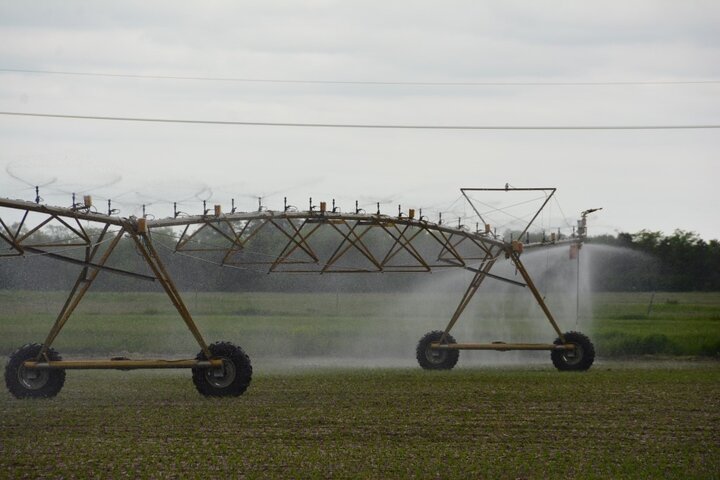
Center Pivot Operating Pressure
Checking the pressure regularly (i.e., weekly to bi-weekly) or monitoring continuously can help maintain optimum efficiency and minimizes irrigation costs. Operating pressure can deviate above or below the required pressure for a number of reasons, such as changes in groundwater level overtime, topography, and leaks along the irrigation system. For example, Figures 2 and 3 illustrate the fluctuation of pressure at the end of a pivot overtime and across a field (i.e., pivot rotation degree), respectively.
Checking the pressure regularly (i.e., weekly to bi-weekly) or monitoring continuously can help maintain optimum efficiency and minimizes irrigation costs
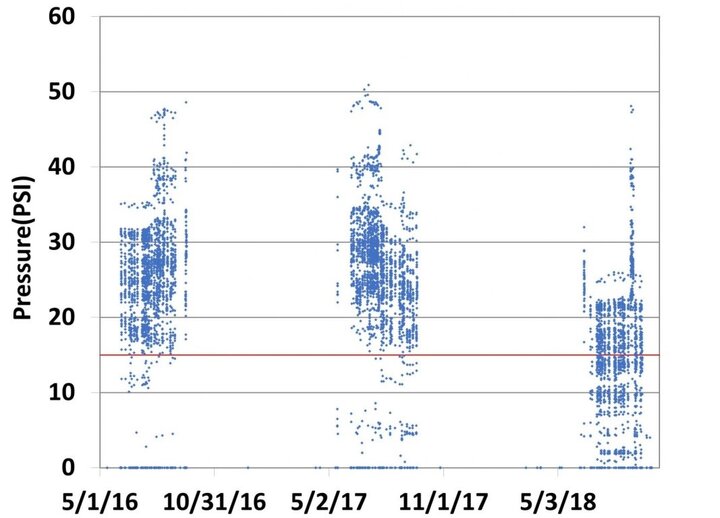

Pressure gauges can be easily installed on existing irrigation systems, and new pivots are often equipped with them. All wireless remote pivot control systems can monitor pressure and send alerts to mobile phones or computers when pressure falls outside a predetermined range. These data can assist managers in maintaining pivot performance. However, it should be noted that the accuracy of gauges may decay over time, but replacing gauges is affordable and simple.
Evaluation of Nebraska Pivots
Thirty-one center pivots equipped with pressure regulators across Nebraska were analyzed. Data were collected by AgSense Field Commander units mounted at the end of the pivots. For this analysis, the ideal range of pressure at the end of the pivots was considered to be 0 to 10 psi above the required regulator inlet pressure; equivalent to 5 to 15 psi above the pressure regulator rating. Approximately 55% of the center pivots evaluated had a pressure below the required regulator inlet pressure for at least 5% of the time (Figure 4). Operating pivots below the required regulator inlet pressure can lower pivot performance (in terms of uniformity) and may result in over- or under-irrigating. It was expected that fields with a greater range in topography would be more likely to have a low pressure (e.g. in a high-elevation portion of the field); however, this was not observed (Figure 5). It is also expected that center pivots with wells where the water table declines significantly through the growing season may be more likely to have low operating pressures.
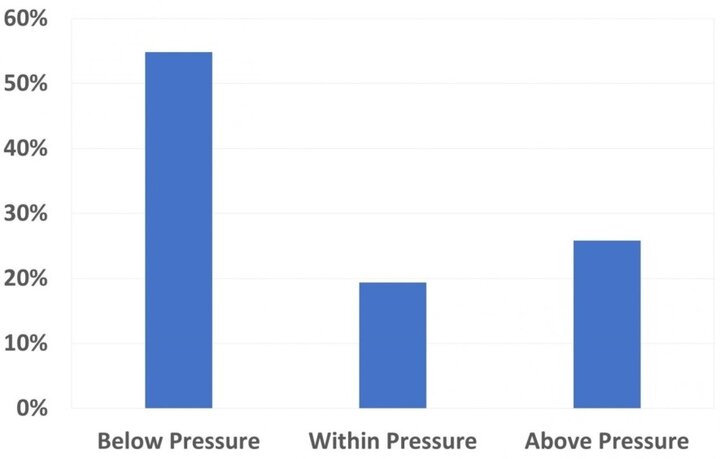
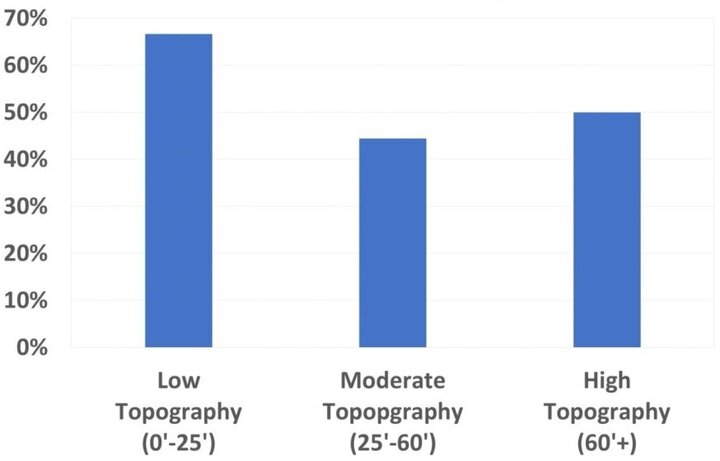
A simulation was performed to predict the effect of low pressure on the uniformity of irrigation application depth along the pivot lateral (Martin et al., 2019). For this example, the design pressure at the pivot point was 41 psi (Figure 6). When the inlet pressure at the pivot point was reduced to 36 psi, 26% of the length of the pivot lateral (representing 45% of the area of the field) had an irrigation application depth less than the intended application depth. When the pressure was reduced to 29 psi, 65% of the length of the pivot lateral (representing 87% of the area of the field) had an irrigation application depth less than the intended application depth.
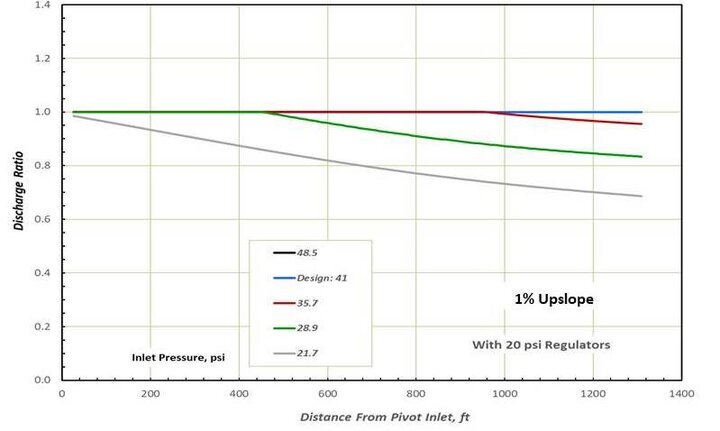
Guidelines and Additional Resources
Tips for ensuring that your pivot is operating in an ideal pressure range (from the Center Pivot Irrigation Handbook):
- Obtain a sprinkler package for your pivot and ensure its proper installation.
- Ensure the pump and pivot are properly matched and ensure that engine and pump speeds are correct for the required voltage and pressure.
- Operate the system when crops are small and inspect for broken or plugged sprinklers and regulators, as well as leaks.
- Buy a good pressure gauge and operate the pivot at design pressure
- Install an additional pressure gauge at the distal end of the pivot, periodically checking the gauge at the highest elevation. The pressure should be at least the required regulator inlet pressure, which is 5 PSI above the pressure regulator rating.
To learn more about the importance of center pivot operating pressure, see the following references:
- Martin, D. L., D. M. Heeren, S. R. Melvin, and T. Ingram. 2019. Effect of limited water supplies on center pivot performance. Central Plains Irrigation Association (CPIA) Central Plains Irrigation Conference, Kearney, Nebr. 27 pages.
- Martin, D. L., W. L. Kranz, T. Smith, S. Irmak, C. A. Burr, and R. Yoder. 2018. Center Pivot Irrigation Handbook. Nebraska Extension: Lincoln, Nebr.
